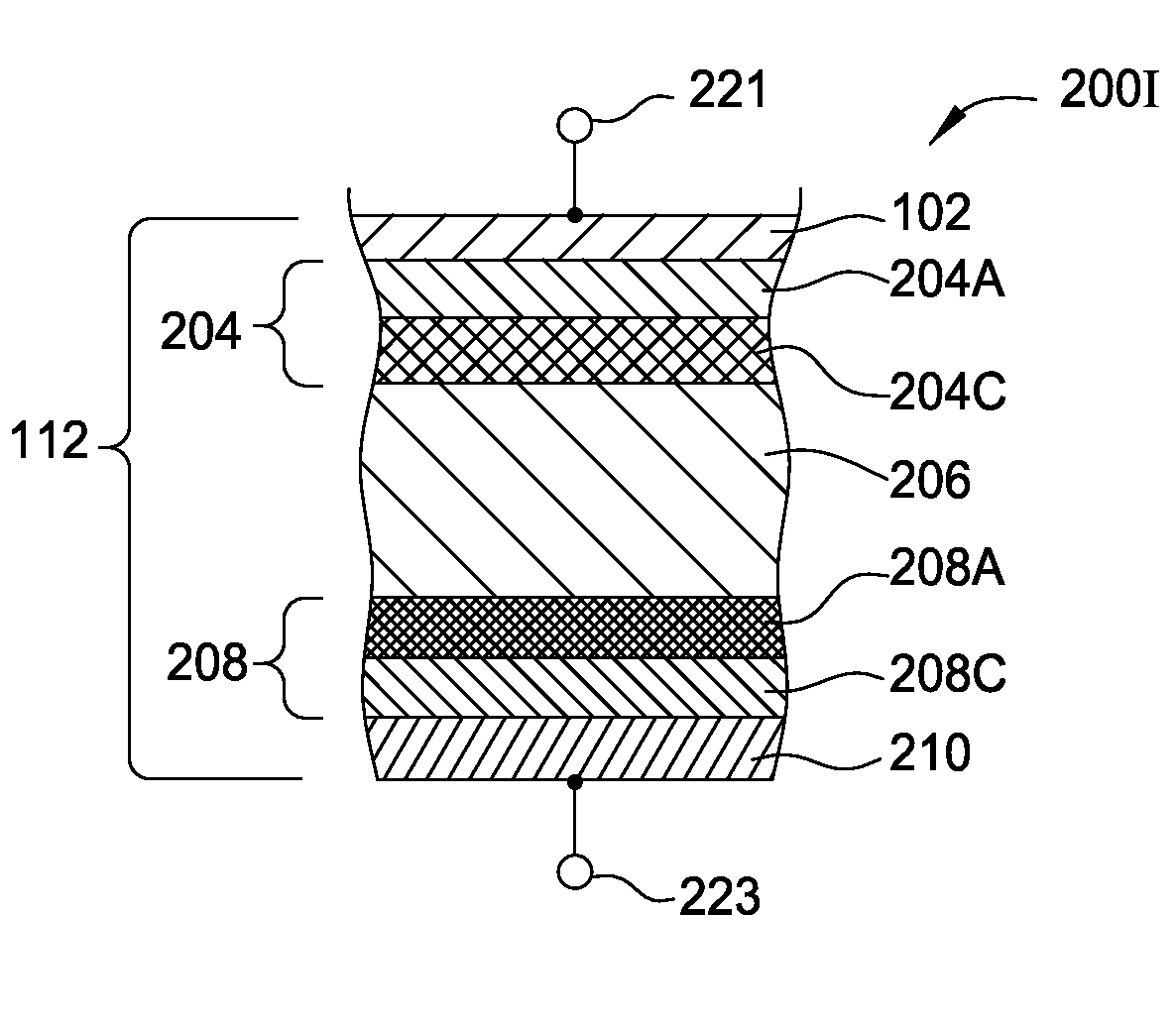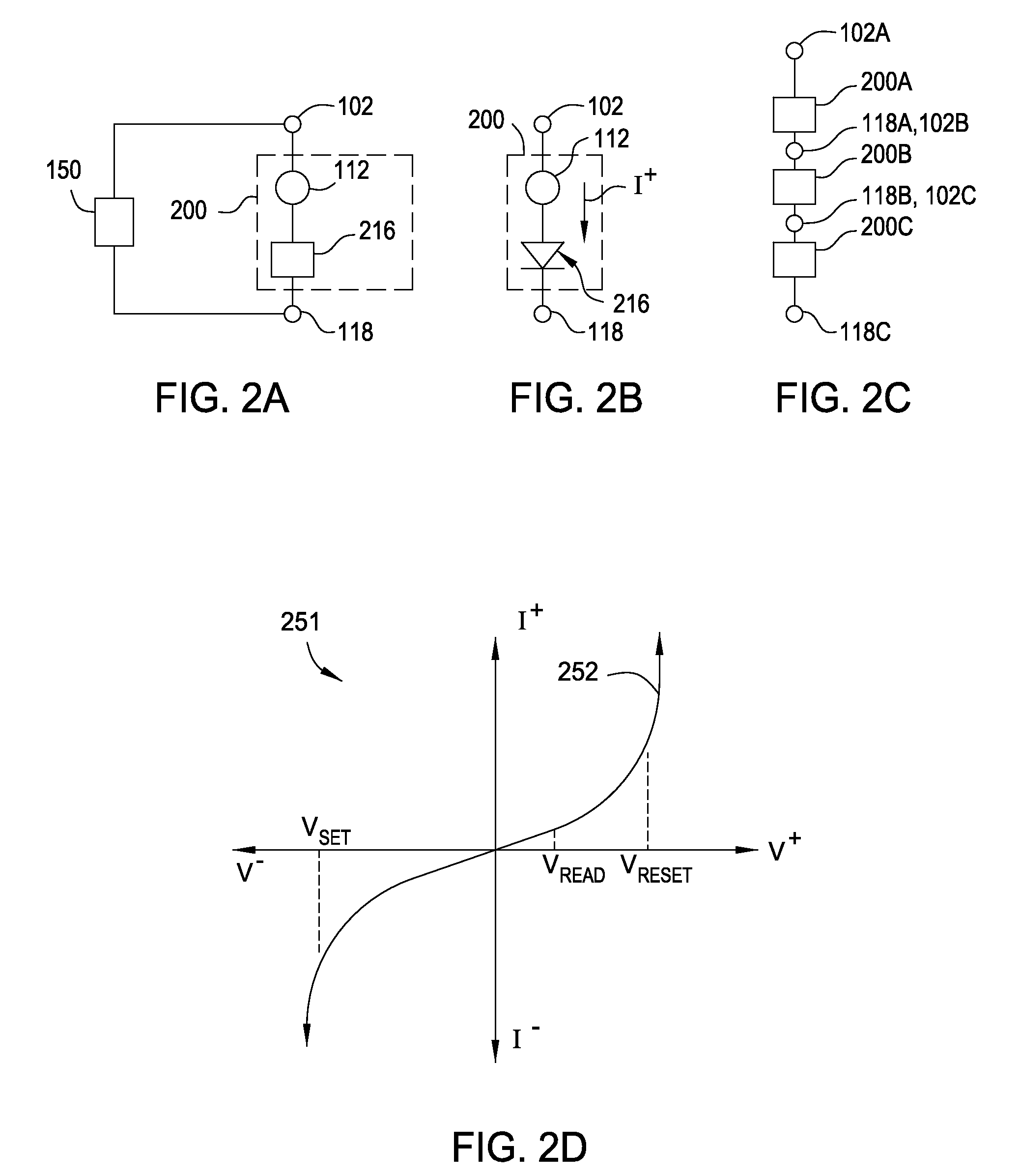Work function tailoring for nonvolatile memory applications
- Summary
- Abstract
- Description
- Claims
- Application Information
AI Technical Summary
Benefits of technology
Problems solved by technology
Method used
Image
Examples
Embodiment Construction
[0035]Embodiments of the invention generally relate to a resistive switching nonvolatile memory device having an interface layer structure disposed between at least one of the electrodes and a variable resistance layer formed in the nonvolatile memory device, and a method of forming the same. Typically, resistive switching memory elements may be formed as part of a high-capacity nonvolatile memory integrated circuit, which can be used in various electronic devices, such as digital cameras, mobile telephones, handheld computers, and music players. In one configuration of the resistive switching nonvolatile memory device, the interface layer structure comprises a passivation region, an interface coupling region, and / or a variable resistance layer interface region that are configured to adjust the nonvolatile memory device's performance, such as lowering the formed device's switching currents and reducing the device's forming voltage, and reducing the performance variation from one for...
PUM
 Login to view more
Login to view more Abstract
Description
Claims
Application Information
 Login to view more
Login to view more - R&D Engineer
- R&D Manager
- IP Professional
- Industry Leading Data Capabilities
- Powerful AI technology
- Patent DNA Extraction
Browse by: Latest US Patents, China's latest patents, Technical Efficacy Thesaurus, Application Domain, Technology Topic.
© 2024 PatSnap. All rights reserved.Legal|Privacy policy|Modern Slavery Act Transparency Statement|Sitemap



